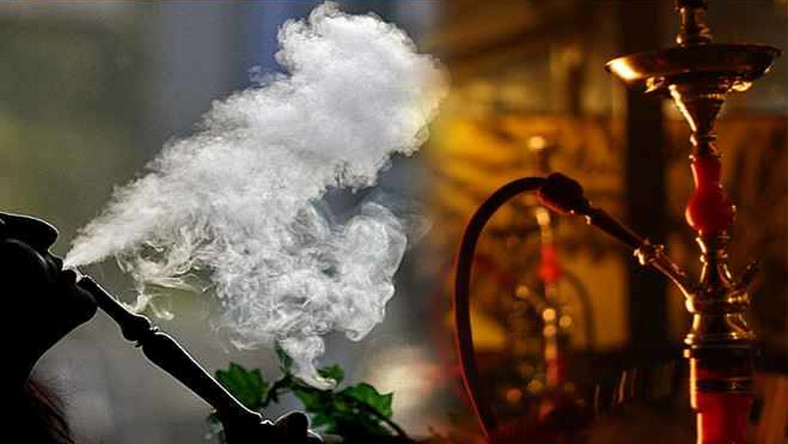A few months ago, a young man came to me for answers.
Kabir* had developed a persistent cough over the past few months. His chest hurt and breathing was becoming difficult. He called a friend of his who told recommended some over the counter cough syrup. The next morning after sleeping poorly, he realised his pillow was stained with reddish-brown spots. Nobody needed to tell him it was time to visit the hospital.
He was honest, this young man of twenty-six; and that made my work a lot easier. Kabir denied smoking cigarettes, weed or pot but admitted freely to smoking the popular water pipe called ‘Shisha’. He had developed a taste for it and smoked it daily for the past five years, since his university days in Dubai. Like many others, he assumed it was a lesser evil than cigarette smoking and used it as a way to unwind and hang out with friends. Together with his friends, they had formed a sort of exclusive ‘majlis’ (club) where they experimented with different flavours, pipes and methods while forming ties of kinship.
Before coming to the hospital, he had read about the effects of Shisha online and was rightly worried that he had developed either a chest infection or lung cancer. His expression was a mixture of guilt and naivety and I realised that he truly did not appreciate the magnitude of smoking for five years. It was not a big deal, he argued. Everyone was doing it. His father had smoked cigarettes for more than thirty years before quitting. Was smoking not part of the culture in the sixties?
My former hot-headed self would have launched into a debate on the effects of nicotine and carbon monoxide on the lungs and our health in general, but lately (maybe due to old-age), my patience has greatly improved so much so that I can sit back and allow people to do as they wish. I have realised that people learn better from their mistakes. And besides, I know better than to argue with a young man coughing up blood.
- Darkness, chaotic traffic pervade Abuja over malfunctioning streetlights
- The Good, The Bad and The Ugly
His results showed a suspicious lesion in his left lung. My assumption that it was chronic obstructive pulmonary disease was wrong- Kabir most likely had lung cancer. His parents and friends were devastated and I remember the incredulous look he had when the chest CT result came out. Luckily for him, his parents could afford to fly him out of the country where a section of the lung lobe was removed. The last I heard was that he was recovering well.
Hookah or ‘Shisha’ as it is more commonly referred to, began centuries ago in ancient Persia and India. These water pipes are used to smoke specially made tobacco that comes in different flavors, such as apple, mint, cherry, chocolate, coconut, licorice, cappuccino, and watermelon. The first hookah in the form we know today dates back to 16th century India at a time when Indian glass manufacturing began as a result of the exporting of glass in India through the British East India Company. During this period, smoking tobacco also became popular amongst the noblemen in high society. In an attempt to purify smoke through water in a glass base called a “Shisha”, the Hookah was invented. With this design in place, Hookah soon cemented itself as a way for noblemen to show their high social status.
Later, in the 17th century, Shisha became a part of Persian culture where strong, dark leaf tobacco called Ajami was used. It spread like wild fire though out the middle east and became imbibed in their culture. By the 21st Century, a Shisha industry surfaced in the United States as early pioneers found ways to improve the quality of products using modern technology. Innovations in flavour choices beyond the traditional were also crafted to address the demands of current-day taste preference and variety. A typical modern hookah has a head (with holes in the bottom), a metal body, a water bowl, and a flexible hose with a mouthpiece.
And with globalisation, it was just a matter of time before this culture was introduced into Nigeria. The Lebanese flaunted it, made it look cool and the industry promoted it as harmless, a lesser evil than smoking. Sadly, many still believe this blatant lie.
Shisha smoking is NOT a safe alternative to smoking cigarettes. Although many users think it is less harmful, studies have shown that hookah smoke contains many of the same harmful components found in cigarette smoke, such as nicotine, tar, and heavy metals. At least 82 toxic chemicals and carcinogens have been identified in hookah smoke.
Shisha or water pipe smoking carries three additional health risks over cigarette smoking.
Firstly, the coal over which shisha is smoked adds to the already long list of toxins present in tobacco. The charcoal used to heat the tobacco can raise health risks by producing high levels of carbon monoxide, metals, and cancer-causing chemicals.
Secondly, a single shisha session results in the smoker inhaling up to 200 times more smoke than cigarette smokers. A study showed that in a typical 1-hour shisha smoking session, users may inhale 100–200 times the amount of smoke they would inhale from a single cigarette. Furthermore, in a single water pipe session, users are exposed to up to 9 times the carbon monoxide and 1.7 times the nicotine of a single cigarette. Therefore, people who smoke shisha are more at risk for some of the same diseases as cigarette smokers. These include pulmonary and cardiovascular diseases as well as oral, lung and stomach cancer among others.
Thirdly, the rates of second-hand smoking associated with shisha are high due to its high social acceptance. Once upon a time, people used to frown upon it; regarding it as alien to our African culture. Now though, it has become socially acceptable to see a group of young people sitting at joints in the evening, gisting and smoking. Shops selling shisha merchandise have sprung up across all states across the nation like bet9ja and GTbank.
Furthermore, Shisha smoking is typically done in groups, with the same mouthpiece passed from person to person. This means that diseases like hepatitis and other communicable diseases can be passed from person to person. I do not need to emphasize how damning this is, in this COVID era.
Like cigarette smoking in the fifties and sixties, Shisha smoking has become part of the culture of the 21st century. It baffles me how, in this era of knowledge at our finger tips, young people and now even older adults are succumbing to peer pressure and inhaling carcinogens into their systems. Many are like Kabir, blissfully ignorant; but not many will be as lucky as him.
Many will have to pay the ultimate price.

 Join Daily Trust WhatsApp Community For Quick Access To News and Happenings Around You.
Join Daily Trust WhatsApp Community For Quick Access To News and Happenings Around You.

